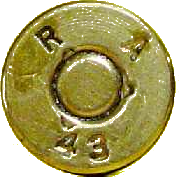Ysterhout Dot Net
After deciding to go ahead with casting I asked Google for instruction on how to melt lead for casting bullets, and was referred to FortuneCookie45LC on YouTube .
He demonstrated how to use a Lee pot, and the Saeco, so I put a Lee melter on the shopping list.
One of his instructional videos explains why the ingot casting is best done separately from the bullet casting. Further searches showed that ingot casting is best done with bigger melters than the Lee 20-pound pot.
The source of lead for casting is scrap, and scrap is not always wheelweights, it could be lead pipe, sheeting, etc. These are irregular size and shape, and physically may not fit into a 20-pound Lee pot to be melted into ingots.
So I added a bigger pot for scrap to the shopping list as well. Only problem is the biggest lead melter from Lee and RCBS is 20 pound capacity.
I asked Google to show me lead scrap melting, and I noticed that most of the melting is done with a custom-made pot.
I would have to make something to melt lead scrap, and if I was going to make a large one I could also make a small one. So I crossed the Lee off my list.
The simplest melter would have been a cast iron or heavy stainless pot. Compared to dipping with a ladle, the bottom pour melters looked like a much easier job, and I prefer the easy jobs.
This post by Shadowcaster on castboolits.gunloads.com was the basis.
It turned out for the price of a new 20-pound Lee pot, I was able to buy enough material to make two gas-powered lead burners.
The large one for ingot casting has a 300 kg volume capacity, or 660 pounds. The small melter for casting into bullet moulds, has a volume capacity of 30 kg or 66 pounds of lead.
The biggest cost items being the gas burners and heat-resistant paint, assuming you already own the necessary tools. Metal I scrounged from what I had lying around, and the rest bought as offcuts. The 75mm rock-wool was cheaper than the paint.
The pages that follow document the project.
 Making a Lead Melter
Making a Lead Melter


